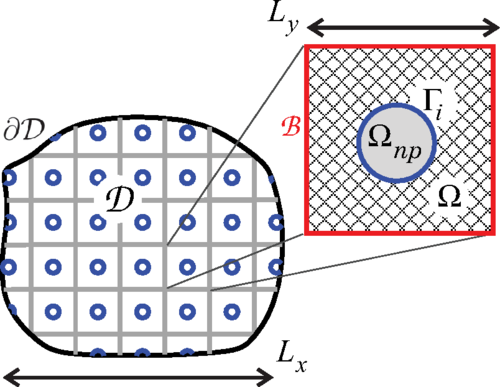Multiscale modelling of doped liquid crystal systems
Schematic of the scale separation used in the multiscale method of homogenisation. The macroscopic domain consists of an open region D, with external boundary ∂D.
The introduction of foreign particles to alter and tune the properties of liquid crystal systems is an area of great interest and research. The addition of these particles allows for greater control, or even possibly entirely new, behaviours of the otherwise unaltered systems. Mathematical models of such doped systems are essential for their understanding and improvement but are often very computationally expensive. This is due to the microscopic effects of individual particles and the overall macroscopic behaviour of the system existing at vastly differing length scales. By employing multiscale averaging methods, we reduce the system to one that exists purely at the macroscopic scale for a single “averaged” material and computational study times are vastly reduced.
T.P. Bennett, G. D’Alessandro and K.R. Daly, Multiscale models of colloidal dispersion of particles in nematic liquid crystals, Phys. Rev. E 90(6), 062505 (2014)
https://doi.org/10.1103/PhysRevE.90.062505
T.P. Bennet, G. D’Alessandro and K.R. Daly, Multiscale models of metallic nanoparticles in nematic liquid crystals, SIAM J. Appl. Math. 78(2), 1228-1255 (2018)
https://doi.org/10.1137/18M1163919
